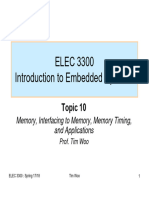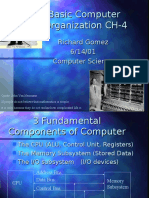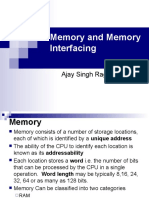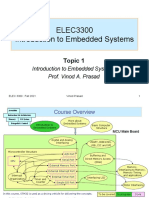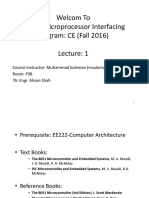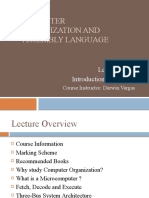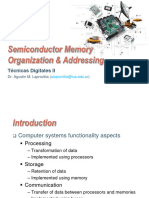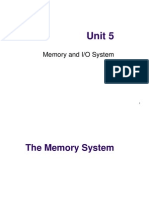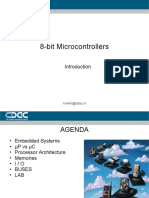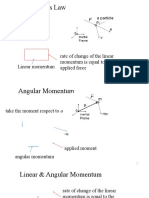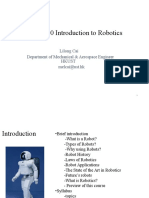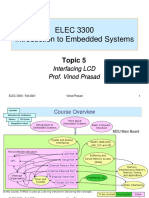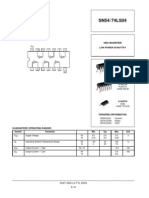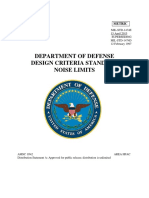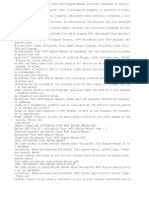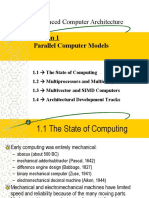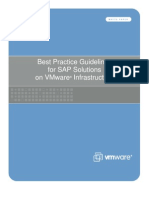0% found this document useful (0 votes)
95 views19 pagesELEC3300 - 03-Basic Computer Structure
- The 8255 PPI chip occupies 4 memory locations - ports A, B, C and a control register
- The ports and control register are configured via the control word written to the control register
- To write a driver:
1. Initialize the chip by configuring the ports as input/output via the control word
2. Implement data transfer operations by selecting the appropriate port and reading/writing data
3. The process is repeated for each data transfer operation
Uploaded by
Keith wongCopyright
© © All Rights Reserved
We take content rights seriously. If you suspect this is your content, claim it here.
Available Formats
Download as PDF, TXT or read online on Scribd
0% found this document useful (0 votes)
95 views19 pagesELEC3300 - 03-Basic Computer Structure
- The 8255 PPI chip occupies 4 memory locations - ports A, B, C and a control register
- The ports and control register are configured via the control word written to the control register
- To write a driver:
1. Initialize the chip by configuring the ports as input/output via the control word
2. Implement data transfer operations by selecting the appropriate port and reading/writing data
3. The process is repeated for each data transfer operation
Uploaded by
Keith wongCopyright
© © All Rights Reserved
We take content rights seriously. If you suspect this is your content, claim it here.
Available Formats
Download as PDF, TXT or read online on Scribd
/ 19


